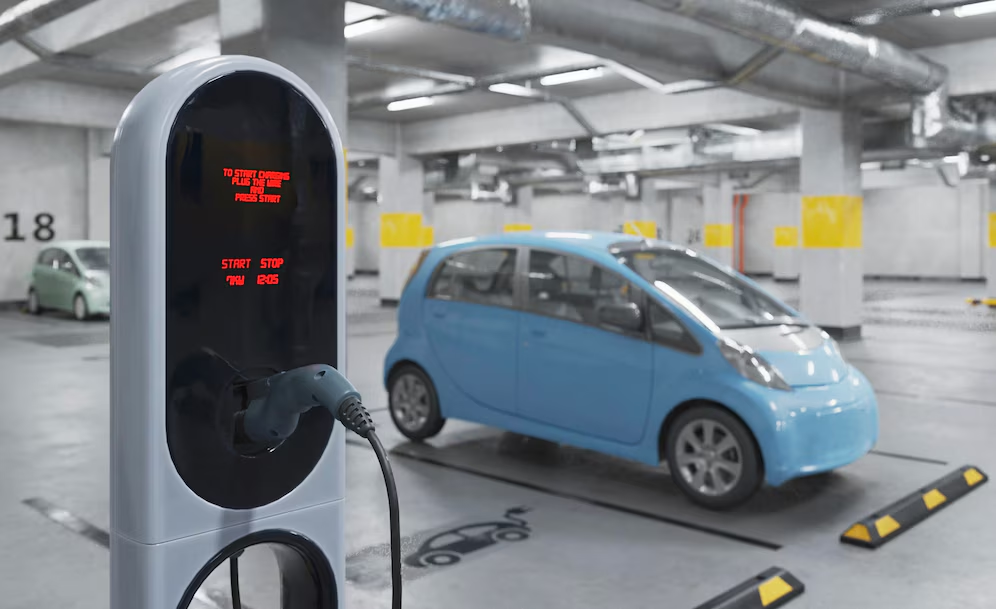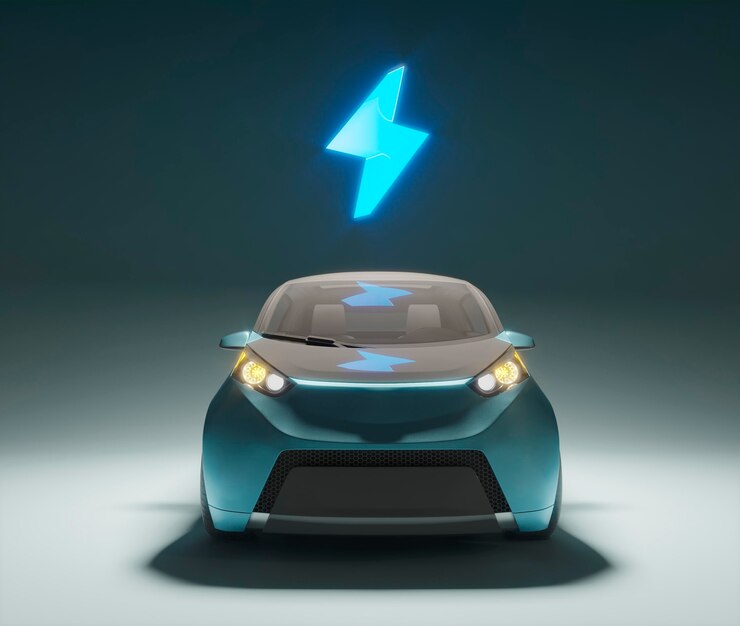Introduction
The global automotive industry has seen a significant shift toward electric vehicles (EVs) in recent years. Governments and businesses all over the world are promoting electric vehicles as a sustainable and environmentally friendly alternative to conventional gasoline-powered automobiles in light of concerns about climate change, rising fuel costs, and resource depletion. Electric cars are not only reducing the carbon footprint but also reshaping the future of transportation through innovative technology and infrastructure.This article explores the rise of electric cars, their technological advancements, environmental benefits, economic impact, and the challenges they face. It also looks at how government policies, market trends, and expectations for the future are driving the revolution in electric cars.

History of Electric Cars
The idea of electric cars is not new. In the early 19th century, the first practical electric vehicle was built. In 1828, the Hungarian engineer Nyos Jedlik built a small electric motor-powered model car. Robert Anderson, a Scottish inventor, created the first crude electric carriage in 1832. Electric cars had become popular in Europe and the United States by the late 19th century. In 1899, Camille Jenatzy set a land speed record of 65 mph with his electric car, “La Jamais Contente.” During this time, electric vehicles were favored over gasoline-powered vehicles due to their quiet operation, lack of pollution, and ease of driving. However, the decline of electric vehicles in the early 20th century was brought about by the development of the internal combustion engine (ICE) and the discovery of inexpensive gasoline.
Decline and Revival (1920s – 1970s)
In 1912, Charles Kettering came up with the electric starter, which made gasoline-powered cars more practical and easier to use. This led to the demise of electric vehicles. However, during the oil crisis of the 1970s, interest in electric cars resurfaced as governments sought to reduce dependence on foreign oil. Electric cars never became commonplace due to battery limitations and high production costs, despite some technological advancements.
Modern Era and Rise of Electric Vehicles (2000s – Present)
For electric vehicles, the 21st century marked a turning point. Interest in alternative modes of transportation has been rekindled as a result of worries about pollution, global warming, and the fluctuation of fuel prices. Innovative electric models like the Tesla Roadster (2008), Nissan Leaf (2010), and Chevrolet Volt were introduced by General Motors, Tesla, and Nissan. The market for electric vehicles expanded more quickly as a result of advancements in lithium-ion battery technology, improved charging infrastructure, and favorable government policies.
How Electric Cars Work
Instead of internal combustion engines, electric cars use battery packs and electric motors. An electric car’s fundamental components are as follows:
Battery Pack
Due to their high energy density, lightweight design, and long lifespan, lithium-ion batteries are the most prevalent in electric vehicles. The battery pack stores electricity and powers the motor.
Electric Motor
Converts electrical energy from the battery into mechanical energy to drive the wheels.Provides instant torque, resulting in quick acceleration and smooth performance.
Inverter
transforms the battery’s direct current DC into the alternating current AC that powers the electric motor.
Charging System
Home chargers, public charging stations, and fast-charging networks are all options for charging electric vehicles. Charge times vary based on battery capacity and charging infrastructure.
Regenerative Braking
transforms braking kinetic energy into electrical energy that is stored in the battery to increase efficiency.
Advantages of Electric Cars
Zero Emissions: Electric cars produce no tailpipe emissions, reducing air pollution and contributing to cleaner cities.Lower Carbon Footprint: When charged using renewable energy sources, EVs further reduce greenhouse gas emissions.Energy Efficiency: Electric cars convert over 85% of electrical energy into mechanical energy, making them more efficient than gasoline cars.
Economic Benefits
Government Incentives: Many governments offer tax credits, rebates, and exemptions to encourage the adoption of electric vehicles.Reduced Dependency on Oil: The widespread use of electric cars reduces reliance on imported oil, thereby improving energy security. Electricity is cheaper than gasoline, and electric cars require less maintenance because they have fewer moving parts.
Performance and Convenience
Smooth and Quiet Operation: Electric motors provide a quiet and comfortable driving experience.Instant Torque: Electric cars deliver quick acceleration and responsive handling.Home Charging: Owners can conveniently charge their vehicles at home overnight.
Challenges Facing Electric Cars
The cost of producing batteries and the raw materials like lithium, cobalt, and nickel contribute to higher prices for electric vehicles, despite a decline in battery prices.
Limited Charging Infrastructure
Even though charging networks are getting bigger, some places still don’t have enough charging facilities. There are fewer fast charging stations than gas stations, which causes “range anxiety.”
Battery Performance and Lifespan
The driving range is reduced as battery capacity decreases over time. Extreme weather conditions can also affect battery efficiency.
Environmental Impact of Battery Production
Mining for lithium, cobalt, and nickel raises environmental and ethical concerns.Battery recycling and disposal remain a challenge.
Government Policies and Global Trends
Some governments have announced plans to phase out gasoline and diesel cars by 2030–2040. Countries like Norway, Germany, and China offer generous incentives and tax breaks to buyers of electric vehicles.
Automaker Commitment
Major automakers like Tesla, Volkswagen, Ford, and BMW are investing billions of dollars in the production of electric vehicles. Additionally, a number of manufacturers have pledged to only produce electric vehicles within the next ten to twenty years.
Rise of Renewable Energy
Smart grids and vehicle-to-grid V2G technology are enhancing charging efficiency and reliability, and the increased use of hydroelectric, solar, wind, and hydroelectric power to charge electric cars will further reduce their impact on the environment.
Future of Electric Cars
Companies like Tesla, Waymo, and Cruise are testing autonomous electric cars on public roads. It is anticipated that self-driving electric cars will become commonplace, increasing traffic efficiency and safety on the road.
Solid-State Batteries
Compared to lithium-ion batteries, solid-state batteries promise improved safety, faster charging times, and a higher energy density. Automobile manufacturers are making significant investments in solid-state battery research.
Expansion of Charging Infrastructure
Wireless charging and battery-swapping technology are also being developed, and charging stations along highways and urban centers are being rapidly constructed by private businesses and governments.
Integration with Smart Cities
Electric cars will play a key role in smart city ecosystems.Connected vehicle technology will enable real-time traffic management, reducing congestion and emissions.

Conclusion
Electric cars are at the forefront of a global transportation revolution. The rapid adoption of electric vehicles is being fueled by environmental concerns, technological advancements, and government policies. While challenges such as high costs and charging infrastructure remain, ongoing research and development are addressing these issues. The transition to electric cars not only represents a shift in automotive technology, but also a fundamental transformation of the global transportation system. Electric cars are poised to become the predominant mode of transportation in the upcoming decades as battery technology improves, costs decrease, and charging networks expand. Electric cars are paving the way for a future that is more sustainable and efficient thanks to innovative technology, cleaner energy sources, and rising market demand.

